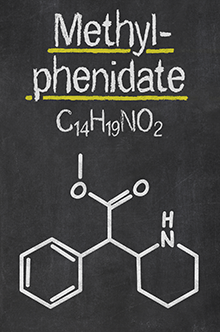Methylphenidate May Increase Risk of Mania in Patients With Bipolar Disorder
Abstract
Up to 20 percent of individuals with bipolar disorder have comorbid attention-deficit/hyperactivity disorder.
Determining the best medications for patients with co-occurring bipolar disorder and attention-deficit/hyperactivity disorder (ADHD) can be challenging, as evidence suggests that pharmacotherapies for ADHD can worsen symptoms of bipolar disorder and vice-versa.

A study published last month in AJP In Advance suggests that methylphenidate may increase the risk of treatment-emergent mania in patients with bipolar disorder when the medication is used without a concomitant mood-stabilizing treatment.
For the study, Alexander Viktorin, Ph.D., of Karolinska Institutet in Sweden and colleagues relied on data contained in Swedish national registries to assess the risk of manic events in 2,307 adults with bipolar disorder who initiated therapy with methylphenidate between 2006 and 2014. The patients were divided into two cohorts—those with and those without concomitant mood-stabilizing treatment. The researchers then compared the rate of mania during a six-month period before the start of methylphenidate treatment with that of the six-month period following the start of methylphenidate treatment.
The researchers observed that the relative risk of mania following methylphenidate treatment among patients treated with methylphenidate monotherapy was increased in both the initial three months after treatment and in the subsequent three months. In contrast, the risk of mania was reduced in the initial three months and slightly reduced in the subsequent three months in patients treated with methylphenidate monotherapy and a concurrent mood stabilizer.

Matthew Macaluso, D.O, says that the current findings offer insight into ways to treat co-occurring bipolar disorder and attention-deficit/hyperactivity disorder without putting patients at risk for worsening symptoms of either disorder.
Matthew Macaluso, D.O., the director of clinical trials and research in the Department of Psychiatry and Behavioral Sciences at the University of Kansas School of Medicine-Wichita, who was not involved with the study, welcomed the findings.
“At times it can be a tug of war when optimizing treatment for bipolar patients with comorbid ADHD. Methylphenidate can often destabilize patients with bipolar disorder, putting them at risk for experiencing irritability and mania,” Macaluso told Psychiatric News.
He noted that studies suggest that up to 20 percent of patients with bipolar disorder have comorbid ADHD. “The current data may be the best data moving forward on this particular issue.”
“On the basis of this finding, we recommend careful assessment to rule out bipolar disorder before initiating methylphenidate as a monotherapy,” the authors concluded. “As no association with treatment-emergent mania was observed among bipolar patients who were concomitantly receiving a mood-stabilizing medication, it would appear that concomitant therapy of ADHD is both safe and feasible in the context of ongoing preventive therapy.” ■



